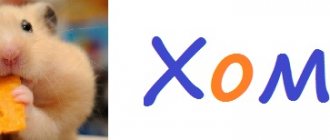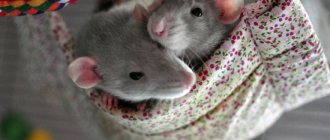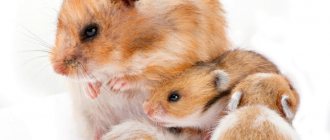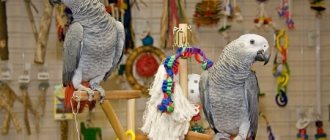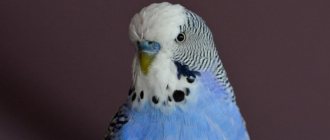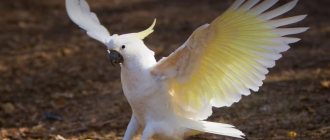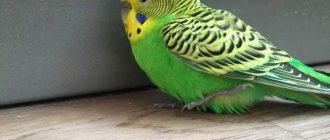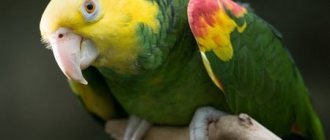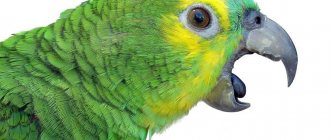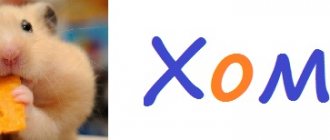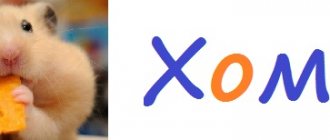Today, the Corella parrot ranks after the budgerigar on the list of recognizable exotic birds. Nymph parrots, as they are also called, can change until the first year, only after this stage you will see how the appearance of the pets changes. And according to reviews from the owners: it is impossible to know everything about cockatiels! After all, they are funny, funny and dancing favorites, with whom it is never boring to sing!
Appearance
In appearance, the nymph parrot belongs to the subgroup of flat-tailed birds. The rounded beak is very active and large, unlike other representatives of birds. The four-toed paws are usually directed in different directions. This natural characteristic is required for dexterous movement along tree branches and convenient capture of food. A special feature is the elongated shape of the plumage on the back of the head.
Feeding
The basis, of course, is a grain mixture, which should indicate that it is suitable for a given type of parrot. Additionally, you can germinate grains, give porridges that are cooked in water without salt, oil and spices (oats, wheat, buckwheat, rice).
Be sure to include vegetables and fruits (carrots, cucumber, zucchini, broccoli, banana, apples, citrus fruits). In the summer, it is good to treat the bird with berries. You can also leave branches of fruit trees, willow, linden, and birch. They need to be thoroughly treated with boiling water and soaked in water.
Don't forget about the mineral stone, sepia.
Color variations
By the tone and color of the plumage, you can distinguish the subspecies of cockatiels and their gender. Corella girls are lighter than male parrots, with the exception of cockatiels - albino. There are designs ranging from silver to dark gray and black varieties, but this depends on the purebred of the subjects.
Crossbreeding affects the nature of the color that appears due to the mixing of genes. The permanent attribute is a light yellow crest with bright orange cheeks. Up to a year old, newborn chicks will have dull bodies like adult females, but as they mature, they will become brighter and have more pronounced colors. In most cases, nymphs have pink nostrils.
The main color variations of the Cockatiel are the following colors: white, dark yellowish, light gray, pearl. Based on this, there are varieties with corresponding breed names.
White
Sea green cockatiels are not albino and get their nickname from males who carry the specific gene, although they are actually a shade of grey. They are crossed with purebred females, which allows the gene to unfold unhindered. One of the subtle differences between males and females is their black pupils. A remarkable bright yellow coating has been seen in both sexes - females and males, but that's where the similarities end. You can distinguish them by their tails:
- The male parrot is purely light colored with two long white feathers.
- In the female, where the undertail is, there is an impression of a clear marbled tint, although the color itself is yellow.
Dark yellowish
This bred subspecies of birds (dark yellow Corella parrot) appeared from mixing a variety of cinnamon colored birds. Coloring varies from dark amber to light vanilla. The lightened areas and the appearance of color are directly related to the gray cover.
Light gray
The light gray cockatiel boasts smoky feathers all over its body except for its milky wings, sunny face and bright orange cheek patches. Both sexes, female and male, have wide pale stripes along the edge of each wing.
Females and males of Corellas are light gray in color (until the 1st moult) and are covered with a dull orange pigment; their faces are not bright yellow, but more gray with an admixture of yellowish coloring. The tail parts of parrots contain a whitish or yellowish line on the underside.
Corella lutino
Definitely one of the cutest parrots is the lutino-colored cockatiel. They are often confused with the wavy family, but are distinguished by the bright scarlet cheek patches on both individuals. At birth, their eyes are reddish in color, but over the years it turns into a softer burgundy-cherry tone. The beautiful color of the plumage also has its drawbacks; under the tail and crest there are bald spots.
Albino Corella
With a complete lack of spots and uniform color, it would be a mistake to call an albino Cockatiel completely white, because some individuals were found to have a slight creamy (vanilla) coating. However, due to its characteristic lack of pigment, it has earned its name.
- Firstly, the crest and the upper area of the head and face have yellow down, which appears after molting.
- Secondly, the female has a light golden mixture on the wings and undertail.
Girls and boys are very similar, because their red-cheeked head looks the same. But they can be distinguished by different degrees of whiteness of the body; males are definitely whiter. To distinguish their tone from another subspecies, it is enough to pay attention to the coat (pale) and eyes (red). They are jokingly called cheekless.
Corella Sheki
Their peculiarity lies in the idea that there are white spots on the cover. It looks aesthetically pleasing and attracts public attention. The most valuable representative of the Corella is Sheki, whose color is symmetrical while maintaining equal proportions of the main shade and snow-white color.
Pearl
The pearly cockatiel has the same colors as a shell with pearls only on the edge of its wings. The bird is a transparent yellowish or beige tone, with solid colored patches on the rest of the body. Males have yellow faces with golden cheek patches. The term "pearly" refers to the lacing or patches of lemon, pearl, or white on the back, nape, and wings.
The pearl parrot nymph is also often called a "lacewing". Female cockatiels, unlike male cockatiels, retain their pearly coloration into adulthood, at a time when males lose their pearls after their first molt (becoming a pied alpha, rather than remaining pearlescent).
Whiteface
During crossbreeding, the white-faced cockatiel lost its orange and straw colors. The head of the female is gray. The tail feathers of the weaker sex have a white wavy pattern. Males are different in appearance, they lose the usual mask and dark gray body color of the main plumage.
Cinnamon colored cockatiel
The Cockatiel cross that produces the cinnamon color is similar to the normal one with the gray areas replaced by brown or shades of brown. The cinnamon cockatiel gets its name from the color it represents, which has been described as a brownish-gray coloring.
About Corella parrots
This is what the Corella parrot looks like photo
The Corella parrot resembles a cockatoo in appearance, whose head is decorated with a beautiful crest. In the wild, their feathers are gray. This is what a cockatiel parrot looks like, you can see the photo above.
origin of name
— Advertising —
Photo of cockatiel
The homeland of cockatiels is Australia. This is how these feathered pets were dubbed by the indigenous inhabitants of the continent. Translated, this name means “like an eagle,” and most ornithologists are inclined to believe that cockatiels were the ancestors of eagles and hawks.
Interestingly, another name for the bird came from Europe. When travelers first saw these graceful birds, they mistook them for gray nymphs, who were considered by the Greeks to be eternally young goddesses of the life-giving forces of nature. Since then, scientists have called the cockatiel a nymph (Nymphicus hollandicus).
The first description of these Australian parrots was given by the Scottish naturalist Robert Kerr in 1793. And in 1840, the first individuals left the mainland on the ships of seafarers and conquered Europe with their appearance and charm. Since 1848, offspring began to be obtained from adult birds in captivity.
Appearance
— Advertising —
Appearance of cockatiel photo
The body of a medium-sized cockatiel parrot, including the tail, is 30 cm. At the same time, the pointed tail is half the length of the bird, and the weight rarely exceeds 100-120 g. You can see a photo of the cockatiel parrot above. The wingspan is from 30 to 35 cm. There are bright spots in the parotid area, and the beak has a neat shape and is slightly curved down, with visible plumage under the nasal openings. With good home maintenance and proper diet, the beak remains smooth, hard and shiny, without signs of delamination and wax growth.
At a young age, birds do not differ in plumage color. But then the males acquire a more saturated olive-gray color. The small head is crowned with a yellow crest. The color of the female's plumage, legs and rings surrounding the eyes remain gray, but the crest and head have a yellowish tint, and the top of the tail and the lower part of the back may be covered with brown pigment. The eyes of cockatiels always remain dark brown, and there are round orange spots on the cheeks that distinguish this bird from other cockatoos.
Corella is a songbird with a rather melodious voice. They sing well and also easily parody human speech, the sounds of household appliances and pets.
The variety of colors is due to the artificial breeding of cockatiels, since it is currently prohibited to export these birds from Australia. Breeders have bred more than 20 species of cockatiels of a wide variety of colors. In addition to colorful parrots, you can also find black and white nymphs.
Intelligence and character
All types of cockatiels are recognizable due to their unpretentious and friendly personality. Birds get along easily with humans and are smart conversationalists. It is not their behavior to be aggressive towards people or their own kind. They quickly learn individual words and phrases and are able to remember melodies (the opposite of a lovebird).
The optimal vocabulary of a cockatiel is 200-300 words. Like any animals and birds, cockatiels can be trained using the gingerbread method. They reproduce with detailed accuracy the sounds of household noise, such as opening a door, a doorbell, or a telephone. In this they are similar to their closest cousins, the cockatoo, the rosella or the Indian necklace.
In order to teach a Corella to speak, you need to buy a chick in childhood and it is best that it is immediately accustomed to being handled. They remember well the sounds with which they associate a certain room, time or action. If you tell your pet a story, the cockatiel will forget it the next day.
For example, the phrase “Good morning” is said only before feeding. If you repeat it repeatedly throughout the day, she will simply say it mindlessly. For every attempt, even if it’s not clear, reward him with a treat or a pat on the neck.
The Corella parrot remembers its name faster with the accompaniment of voicing actions (Kuku eats, Kukku goes to bed, etc.). Parrots are very affectionate towards their owners and treat them as members of the flock. Males, as a rule, are more active than females, whistle and their chirps are more melodious. Breeding requires extreme caution and attentiveness on the part of the owners. If the very nature of pets is kind to humans, this does not mean docile behavior when there are a large number of birds in a confined space.
Owner reviews
Corellas deservedly enjoy high popularity among domestic lovers of feathered pets. Such a bird is quickly tamed and is also capable of learning individual words or entire phrases quite easily. To be fair, it should be noted that the cockatiel's vocal performance is absolutely not up to par.
Important! It is not recommended to make such a bird angry, because when angry the cockatiel makes very loud, ear-piercing and extremely unpleasant screams.
The sounds that such parrots make are very annoying and monotonous. However, males are able to sing very well, and perfectly imitate the voices of a tit or nightingale . According to the owners, the cockatiel expertly begs for pieces of food from the table, and also quickly learns to open the locks on the cage in the absence of the owner.
Spreading
Australia is named as the birthplace of the nymph breed. They live in grassy areas with trees and shrubs spaced apart from each other. Parrots were found on plains along river banks and semi-deserts. They like to move in small groups of 20-50 birds, if not during the breeding season. In regions of severe drought, they accumulate in large flocks near water bodies at a safe distance.
Despite free breeding in captivity and easy adaptation to the human environment, Australian legislation prohibits the export of the Corella breed outside the country. However, there are also tame parrots; they adapt well to an unusual place and, under proper conditions, live from 15 to 25 years.
History of discovery
Cockatiels are native to Australia. In 1838-1840 the famous ornithologist and animalist John Gould visited this country with a zoological expedition and took from there about 800 birds, among which was the Nymph. The scientist wrote and published the book “Birds of Australia”, where he gave a complete description of their appearance and way of life.
In the forties, cockatiels spread throughout Europe. The fact that they are now present in our lives is the merit of the breeders. In the sixties of the last century, the Australian leadership banned the export of parrots outside the state. After this, selection and breeding of Corellas proceeded without the participation of wild winged birds.
Lifestyle
Mostly Corella parrots live in areas such as forests and eucalyptus groves, which are located along the banks of rivers, and in savannas with overgrown grounded bushes. In the wild, they are not used to hiding in the crowns of trees, sitting on the tops. They show different attitudes towards people, depending on where they are: they are afraid in the grass, but in the atmosphere they are used to (at the tops of trees) they are more docile. The birds' habits are more family-like and calm.
Outside their territory, parrots are very careful and circumspect. They do not stay on the banks of reservoirs and rivers longer than expected; to satisfy their thirst, they descend vertically to clean water, after drinking, they return home. Birds' favorite food is the seeds of herbaceous and woody plants, sometimes wheat seeds.
Drowsiness in males and females occurs both at night and during the day. Interesting facts about their regime are explained by the hot climate, where food is most likely obtained more easily at dawn and in the evening. They do not sleep soundly, and despite the small ears of the parrot, they hear the most insignificant rustles. The male sleeps less than the female due to protection of the offspring. Because of this, the male's beak is much stronger.
Nutrition
In the wild, representatives of the breed consume cereals, grass, seeds, nuts, and fruits. They drink water on the fly, taking several sips from the surface of rivers.
It is better not to give human food to poultry, as there are many ingredients that are harmful to them. Corella is more suitable for special fresh food, vegetables and fruits. They can eat boiled eggs and cottage cheese as sources of protein.
What does a cockatiel eat?
The nymph can be given small amounts of sunflower seeds, soaked beans and wheat. Freshly cut grass will be a good treat. During the nesting and molting period, Cockatiels need additional nutrients, which can be given in the form of liquid vitamins.
Care
Keeping an eye on Cockatiels at home is not as easy as it seems. First of all, to keep parrots, you need to buy a cage. It must be roomy so that the parrot can move freely around the house from anywhere. The smallest cell parameters correspond to 65 centimeters in height and 50 centimeters in width. The perimeter is approximately no less than one meter.
Choose a house made of pure stainless material. To make cleaning easier, the bottom should be spread over the pull-out tray. Place two or three wooden posts inside the cage, but do not place them above the feeders. If branches from the yard are being used as posts, be sure to run boiling water over them to maintain sanitation.
Caring for cockatiels will require daily cleaning of the tray. It is also necessary to carry out general cleaning once a week: thoroughly wash the cage and everything in it. Place it in a bright room at eye level so that the pet will soon get used to family members. Do not place in drafts or direct sunlight, especially during hot weather suitable for your area.
Adaptation to a new place
The place must be fully prepared at the time of move-in. You should not pull your cockatiel out of its carrier with your hands into its new home. Create a hallway by simply opening the carrier door and cage and placing them opposite each other. The bird must move from one place to another on its own.
It will take time to get used to your new home. This will take at least a day, and may take a week. The owner should under no circumstances disturb the parrot at this time. A new environment already frightens the animal, and excessive attention will only aggravate the cockatiel’s stressful state. After adapting to the place, you can establish contact with your pet.
Reproduction and breeding
Nature creates the entire environment for the life of the inhabitants of the planet Corellas. Therefore, each male is given the opportunity to feed and reproduce without obstacles. Such conditions occur during the rainy season, when food supply increases for all members of the bird group.
The nest, which is located in hollow branches and trunks of already withered trees, contains approximately 3 to 7 Corella eggs, preferably whitish-colored shells. They incubate the eggs for 3 weeks (21 days), in which neither one, but both parents participate. Chicks are born with yellow fluff. Getting ready to release the cubs after a month or a month and a half, the parents begin to hatch the next offspring.
In a family setting, breeding nymph parrots is not easy, but feasible. It is not enough to prepare the entire external environment; you need to set the birds up for a close relationship and choice of partners, without aggression (for beginners, this means combining the cage and observing behavior). After this, you can see the stage of pregnancy and how the female parrot laid a clutch of eggs. How many eggs there will be depends on favorable conditions.
Please note that, for example, lutino parrots love to fly to maintain a healthy shape. Therefore, free him from his house so that the bird can fly. If it is not possible to release it, a large cage is purchased so that the bird can fly right in it. When releasing the parrot, do not forget to close the windows, and at this hour it is also worth prohibiting access to dogs and cats.
What diseases can a bird have?
Just like other feathered cockatiels, they are susceptible to infectious, bacterial and fungal diseases. Moreover, birds often become carriers of fleas, ticks and lice. We cannot exclude genetic pathologies, which cannot be cured in principle.
Common diseases in cockatiels:
- parasitic insects;
- sinusitis;
- conjunctivitis;
- problems with the gastrointestinal tract;
- feather loss;
- heart diseases;
- worms.
At the first signs of illness, it is better to go to the clinic rather than self-medicate.
Buying poultry for your home
The younger the bird, the easier it is for it to adapt to new conditions. The optimal age for moving to a new owner is 3-3.5 months. The young animals are already quite old and do not depend on their parents: they feed and serve themselves.
What to look for when choosing a chick
First of all, it's appearance. The plumage should be laid evenly and have a glossy appearance. Growths on the beak and paws, watery eyes, indicate problems with parasites or other pathologies. If the chick chirps cheerfully, is active and plays with its fellows, then most likely everything is fine with it.
Males are noticeably easier to train and are interested in training, while females are more sociable and playful.
Price
The average cost of a bird ranges from 1500-4000 rubles , which depends on its subspecies, age and availability of veterinary documents. The latter indicate the vaccinations given and the results of laboratory tests.
Where is the best place to buy
The ideal option is from professional breeders. Buying a cockatiel at the poultry market from private individuals is a big risk. The parrot may turn out to be sick and wild, which greatly complicates the animal’s adaptation to a new place.
